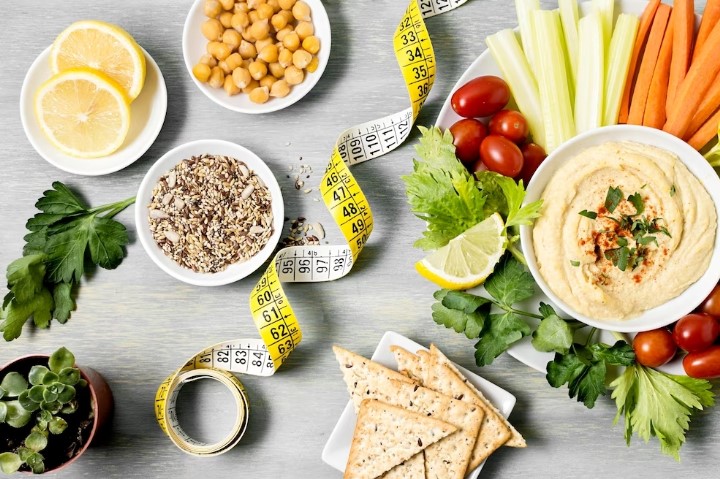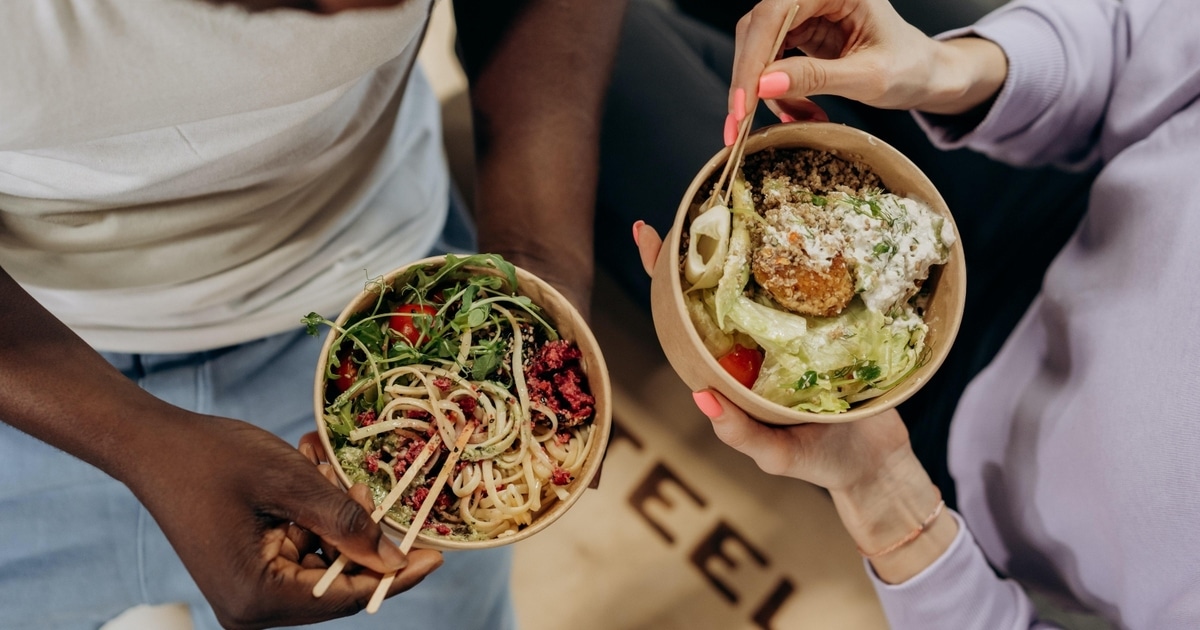
The holiday season is often called “the most wonderful time of the year,” yet if you have diabetes, you may want to rename it “the most challenging time of the year.”

(Getty Images)
Holiday Challenges for People With Diabetes
There are a few reasons why late November and the month of December can get trickier when you have diabetes:
- There are so many food temptations. From carb-loaded Thanksgiving dishes to sugary, yummy cookies and alcoholic drinks, it can be hard to stay on track with your eating routine.
- Holiday celebrations disrupt healthy habits. Those disruptions can affect both what you eat as well as important health habits, such as exercising and sleeping well, says Robert Alesiani, a clinical pharmacist for Tabula Rasa HealthCare in Moorestown, New Jersey. You may also find yourself not taking certain medications as you regularly should.
- The holidays can cause extra stress if you’re preparing food, buying presents and doing other related prep. Sometimes, the holidays may make you feel sad if you think about loved ones who aren’t present with you. Stress, sadness or other feelings could lead you to turn to food to soothe them.
If you’re not careful, those changes to your healthier routines can turn into real health hazards, including hypoglycemia, which involves low blood sugar levels, and hyperglycemia, or high blood sugar levels. Hyperglycemia can happen if you’re on insulin and not using enough or if you’re not using your diabetes medications as prescribed.
Another potential health consequence is a life-threatening emergency called diabetic ketoacidosis. This can occur if your body doesn’t have enough insulin to permit blood sugar into your cells to use for energy. Diabetic ketoacidosis can happen if hyperglycemia is left untreated, and it tends to be more common in people with Type 1 diabetes. Diabetic ketoacidosis can lead to what’s called a diabetic coma or even death.
Some research has also suggested that people with diabetes are more likely to have serious complications from COVID-19, such as blood clots. Spending more time socializing with others could raise your risk for exposure to COVID-19 as well other illnesses, including the flu.
9 Tips for a Healthier Holiday When You Have Diabetes
Despite these scary risks, there are ways you can enjoy the holidays, even if you have diabetes. Here are a few healthy holiday tips:
Many of the challenges people with diabetes face during the holiday season can be managed with good planning, says Amy Kimberlain, a registered dietitian based in Miami and a national spokesperson for the Academy of Nutrition and Dietetics.
Here are a few examples of when to plan ahead so you can stay on track with healthy habits:
- Plan when you’ll eat. Having a meal schedule can be helpful to manage blood sugar levels, Kimberlain says. If you know you’re going to eat later than normal, for example, plan ahead to have a snack around your normal meal time to help keep your blood sugar levels on track.
- Plan how many and which celebrations you’ll attend. This can help you manage stress, which can also raise your blood sugar. If you can stick to attending celebrations you truly want to attend, that means you’ll likely stress less.
- Plan what you’ll eat. When you plan ahead, you’ll know what fun foods you can enjoy without feeling like you might be overloading on carbs and sugar. If possible, find out in advance what’s on the menu of any special events. Pick an item you can indulge in with a small portion, and round out the rest of your choices with healthier foods. Consider bringing a dish if you know there will be something that you enjoy – and that others will like, too.
With all that planning, don’t forget to plan to enjoy your food. “I try to remind clients that any food can fit, it’s a matter of how much and how often,” says Grace Derocha, a registered dietitian and Detroit-based national spokesperson for the Academy of Nutrition and Dietetics.
Between cookie-baking sessions, big dinners and other special occasions, it’s easy to avoid physical activity during the holidays. Don’t! Here’s why: Physical activity offers so many benefits, especially during the holidays, including:
- Preventing weight gain.
- Controlling your stress level.
- Reducing stress hormones.
- Improving your body’s ability to recognize and use insulin.
If you find yourself pressed for time, do what you can — even if it’s less than usual. “Doing something is better than doing nothing,” Derocha says. That could mean 10-minute brisk walks after each meal, moving more as you clean up your house or decorate or finding ways to work in more steps while shopping. For instance, park your car farther away from a store entrance or take an extra lap or two around the perimeter of the mall.
It may be tempting not to check your blood sugar regularly during the holidays because it’s just one more thing to do. However, knowing your blood sugar level helps you to manage your insulin dose if you’re taking insulin, Kimberlain says. If you’re feeling more fatigued or off in some way, you should check your blood sugar. This could alert you to possible hypoglycemia or hyperglycemia. Also, know where your numbers are before the holidays so you have something to compare them to once you’re in the swing of holiday celebrations.
“The goal is to consistently be within the normal ranges for a person with diabetes,” Derocha says. Before a meal, the normal range when you have diabetes is 80 to 130 mg/dL; two hours after a meal, it’s less than 180 mg/dL, according to the Centers for Disease Control and Prevention (CDC). These numbers can vary by age and health factors, so always double check with your health care provider about the norm for you.
It’s good practice to work toward healthy eating year-round, but especially during the holiday season. This includes a balance of protein, fiber and healthy carbs and fats. When eating carbs, having these other food components helps to slow digestion and keep your blood sugar level stable, Derocha says.
Here are a few ideas for snacks that help balance carbs, protein and healthy fats:
- A whole wheat pita with hummus, tomatoes and cucumbers.
- Half a sandwich with a 2 to 3-ounce serving of tuna and lettuce and tomato.
- One-fourth cup of nuts with a tennis-ball sized fruit, such as an apple or orange.
- A few whole grain crackers with a soft cheese, such as ricotta, and a few slices of tomato.
- A pear with ricotta cheese and a small amount of maple syrup on top.
- A red berry or green smoothie with Greek yogurt or tofu for protein.
You can make your meal choices more balanced as well with these diabetes-friendly choices:
- A frittata or a crustless quiche.
- A soup or stew with vegetables, beans and lean protein.
- A casserole with protein, veggies and whole grains.
- A heart-healthy fish, such as salmon or halibut, with vegetables and quinoa.
Controlling your blood sugar involves carb control. This includes distributing your carb consumption as evenly as you can throughout meals and snacks and sticking to healthy carbs, such as whole grains. It may sound like a good idea to have, say, 15 grams of carbs at breakfast time to save 105 grams for a holiday dinner. However, your body and your blood sugar work a lot more efficiently when you keep your carb count consistent with every meal, Derocha says. Having too many carbs at once can make it a challenge to keep your blood sugar levels stable.
Plus, banking your carbs or calories may make it more likely that you’ll get hungry and overeat, Alesiani says.
Alcohol adds calories and carbs. It can also raise and lower your blood sugar quickly. If you choose to have a drink, enjoy it with a meal to keep effects to a minimum. When in doubt, ask your health care provider for guidance on how much alcohol, if any, is OK for you, Kimberlain says.
Traveling has become crazier than ever, and the last thing you want to worry about is whether you have enough of your medications or if your blood sugar will spike and affect your health when you’re not home.
Here are a few ways you can travel smarter during the holidays when you have diabetes:
- Pack and carry your medications as you would your finest jewelry, Alesiani advises. Don’t allow it to be crushed or mishandled. “Working in pharmacy for 35-plus years, I’ve had people walk in who need medications that were lost, forgotten or damaged,” he says.
- Have clear, up-to-date notes of your current prescriptions.
- Pack healthy snacks to take with you.
- If flying, bring any diabetes supplies, such as a blood glucose meter, on board with you versus packing it in checked luggage.
- Bring a water bottle that you can refill so you stay hydrated.
Even with all the fun, the holidays can be stressful. Getting too stressed can increase your blood sugar and just make you feel bad. Find ways to relax, whether through a walk, meditating, a nice bath or anything you do that gives you a healthy, stress-busting outlet, Kimberlain advises.
Keeping any eye out for signs of low or high blood sugar can help you avoid any associated health risks. Even a small health issue can become a challenge during the holidays.
Symptoms of hypoglycemia, or low blood sugar, include:
- Dizziness.
- Feeling irritable.
- Feeling hungry.
- A rapid heart rate.
Check your blood sugar to confirm it’s low, which is below 70 mg/dL, according to the CDC. If that’s the case, aim to consume 15 grams of fast-acting carbs, such as 4 ounces of regular soda or fruit juice or three to four glucose tablets. Check your blood sugar 15 minutes later. Repeat this again if it’s still low after 15 minutes. Continue to do this until your blood sugar is above 70 mg/dL, and eat a snack if you don’t plan to eat your next meal for another hour or more. Ask your health care provider in advance if there’s anything else you should do for low blood sugar.
Symptoms of hyperglycemia, or high blood sugar, include:
- Blurred vision.
- A dry mouth.
- Feeling tired.
- Feeling thirsty.
- Having to urinate more often.
After confirming your blood sugar is high, plan to do some physical activity, such as taking a walk for a few minutes; exercising may help lower blood sugar. After that, you can check your blood sugar again to see if it’s still high. Ask your health care provider in advance what else you should do if you have high blood sugar. Your provider may want you to change your medications or take a closer look at what you regularly eat.
A visit to the emergency room may be in order if you are confused, have shortness of breath, are vomiting, have ketones in your urine or if your blood sugar is 300 mg/dL or higher. Ketones are types of acids the body makes when it breaks down fat for energy. This could indicate diabetic ketoacidosis, the medical emergency that could lead to a diabetic coma. Your health care provider can advise if you should have a urine dipstick test at home to check for ketones.
Final Words on a Healthy Holiday
With some good planning and trying to stick to your routine as much as possible, you can enjoy a wide variety of holiday foods when you have diabetes. Take these tips, and apply them throughout the year to holiday celebrations in which food and drink play a major role, Kimberlain advises.








